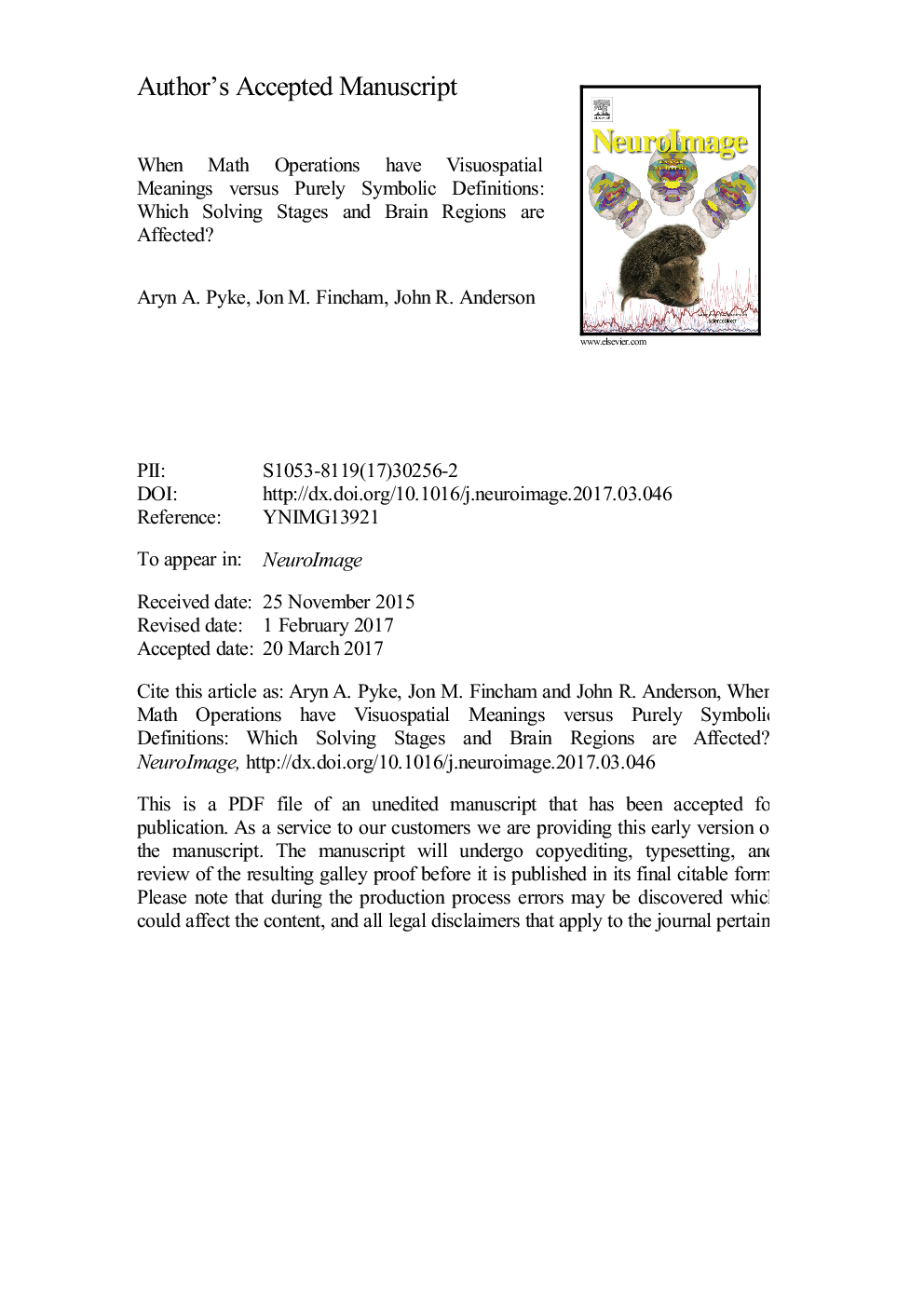ترجمه فارسی عنوان مقاله
هنگامی که عملیات ریاضی دارای معانی متفاوتی در مقابل تعاریف صرفا نمادین است: کدام مراحل حل مسأله و مناطق مغزی تحت تاثیر قرار می گیرند؟
عنوان انگلیسی
When math operations have visuospatial meanings versus purely symbolic definitions: Which solving stages and brain regions are affected?
| کد مقاله | سال انتشار | تعداد صفحات مقاله انگلیسی |
|---|---|---|
| 161494 | 2017 | 74 صفحه PDF |
منبع

Publisher : Elsevier - Science Direct (الزویر - ساینس دایرکت)
Journal : NeuroImage, Volume 153, June 2017, Pages 319-335
ترجمه کلمات کلیدی
حل مسئله ریاضی، مراحل روانی، نمادین نمایندگی تمام عیار، نمودارها،
کلمات کلیدی انگلیسی
Math problem solving; Mental stages; Symbolic; Visuospatial representation; Graphs;

